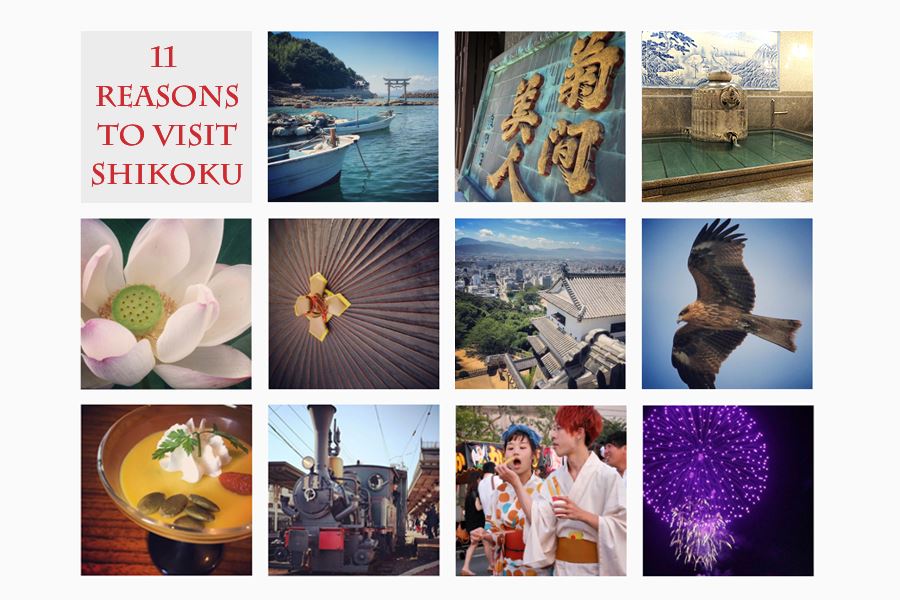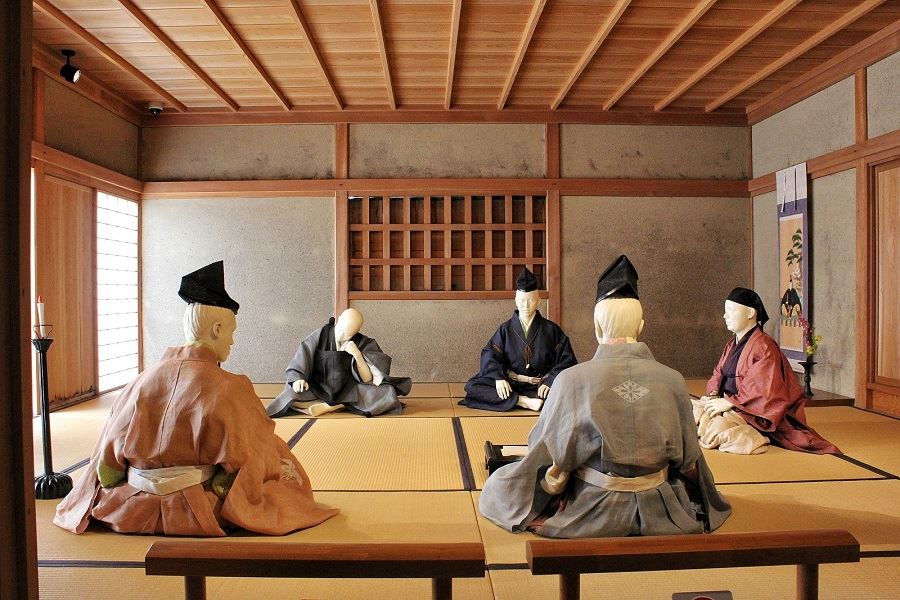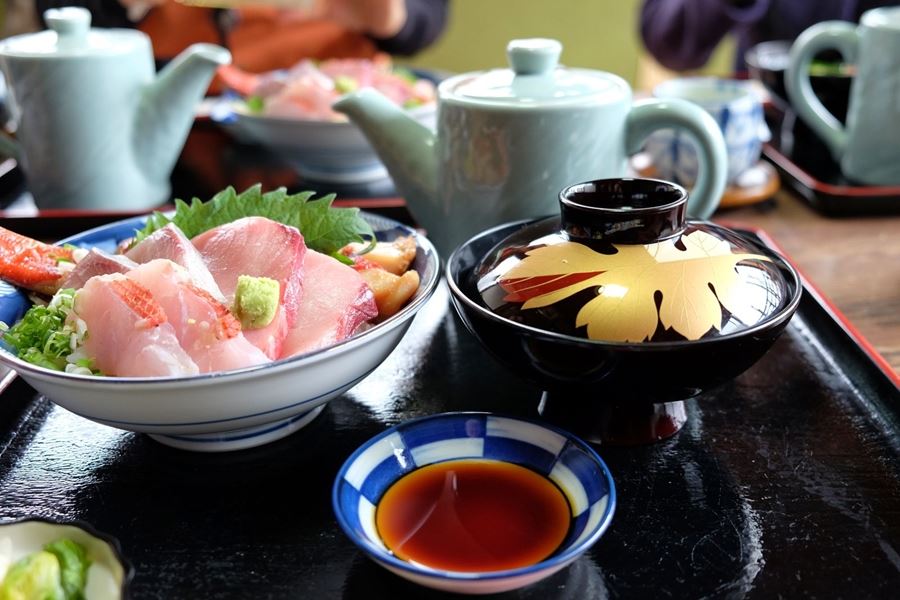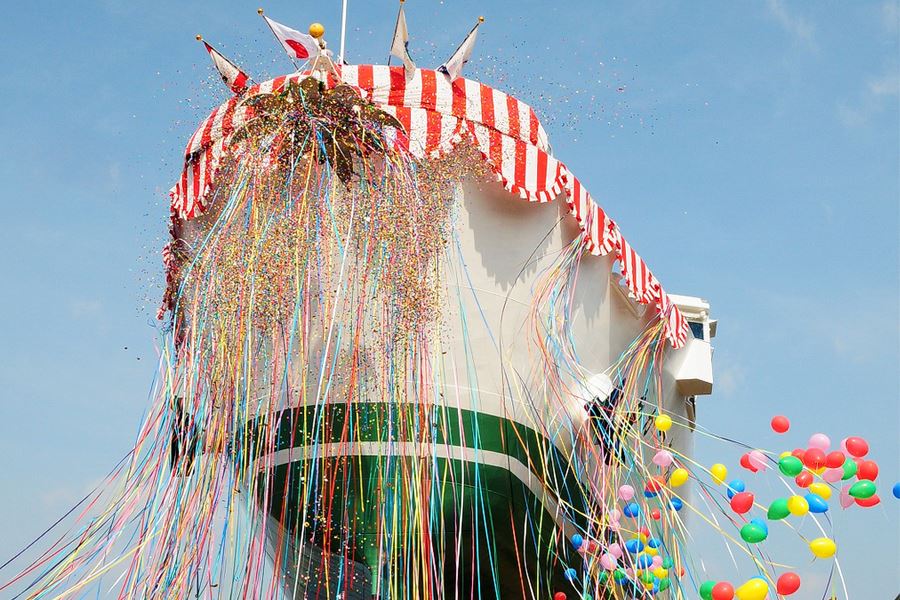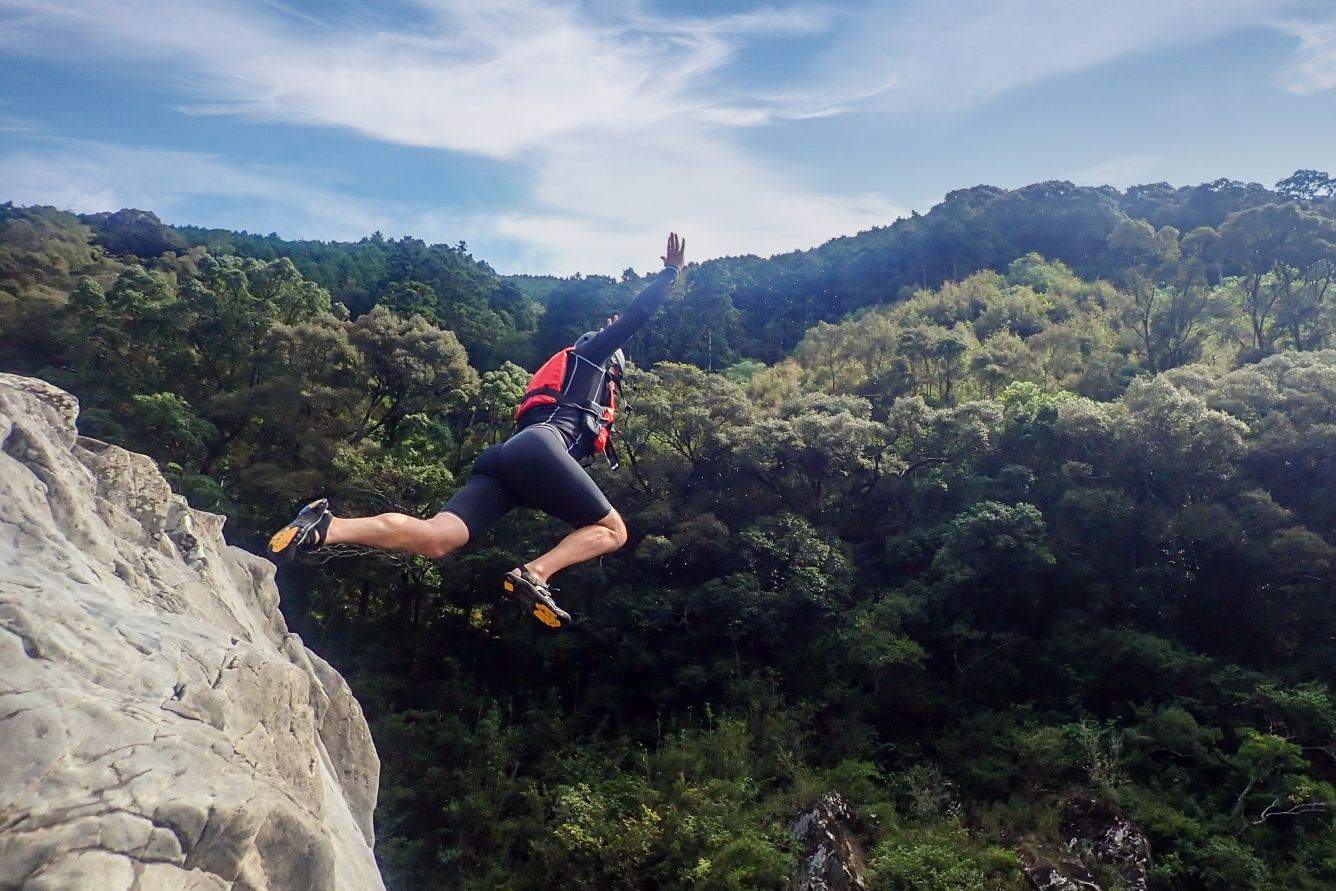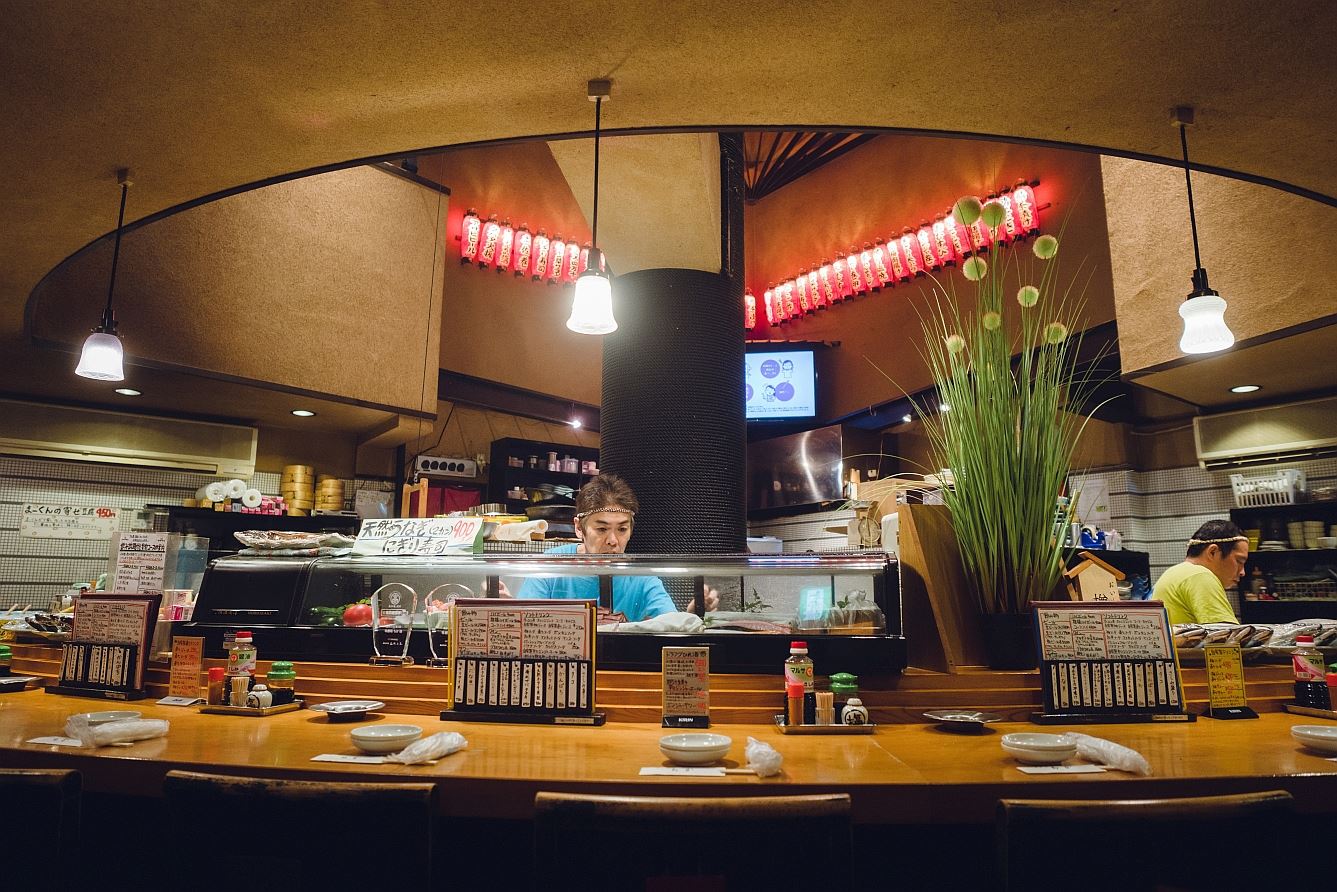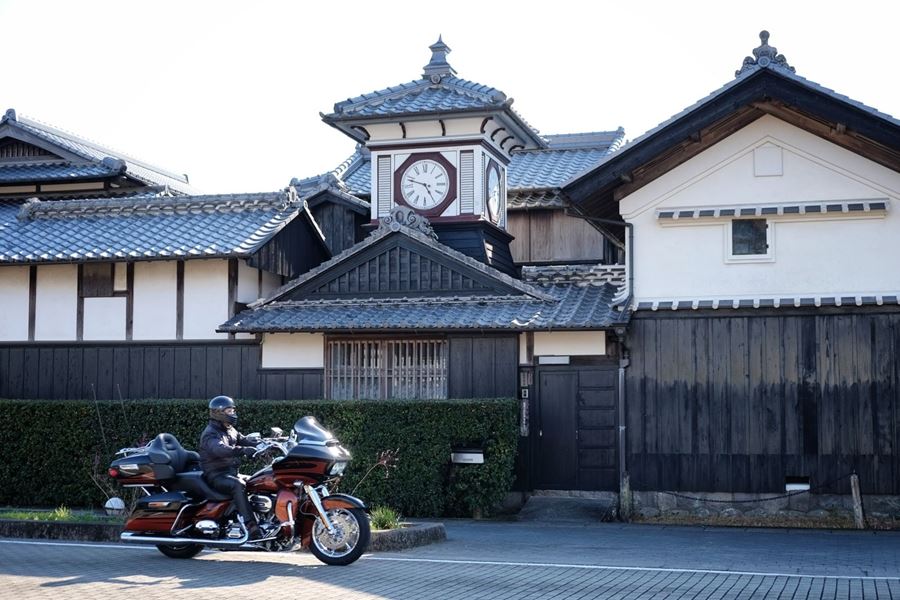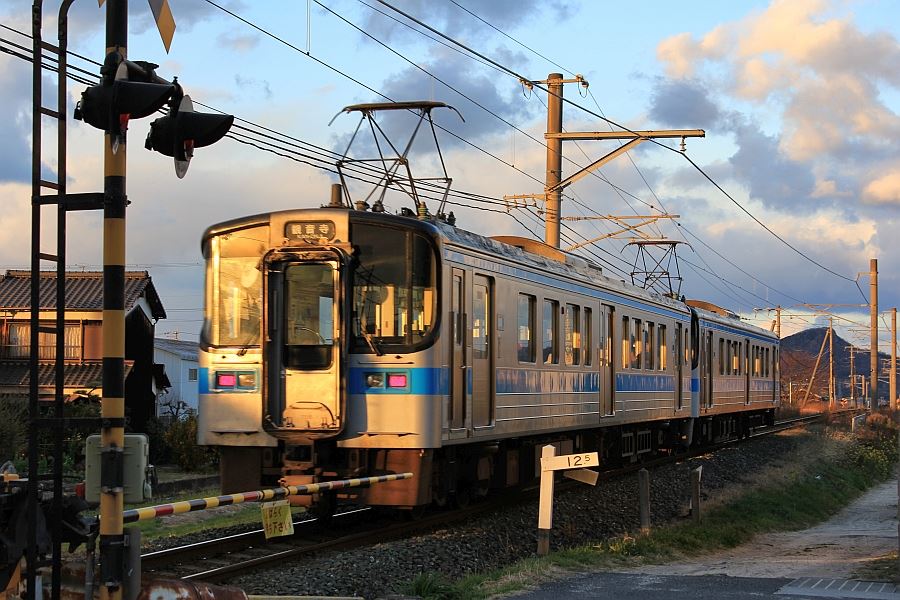Shikoku Sake
Home » Shikoku Sake
Shikoku Sake
Shikoku is a great place to dive into the variegated and friendly world of sake.
As home to the prefecture with the highest consumption of alcohol in Japan (Kōchi), drinking is a popular pastime in Shikoku. The four prefectures each have their own styles of sake, and in the main towns you can find many bars and restaurants whose staff will be more than happy to keep your little cup filled with interesting local brews. Here we consider the characteristics that make Shikoku the ideal destination if you want to enjoy some sake on your travels in Japan.
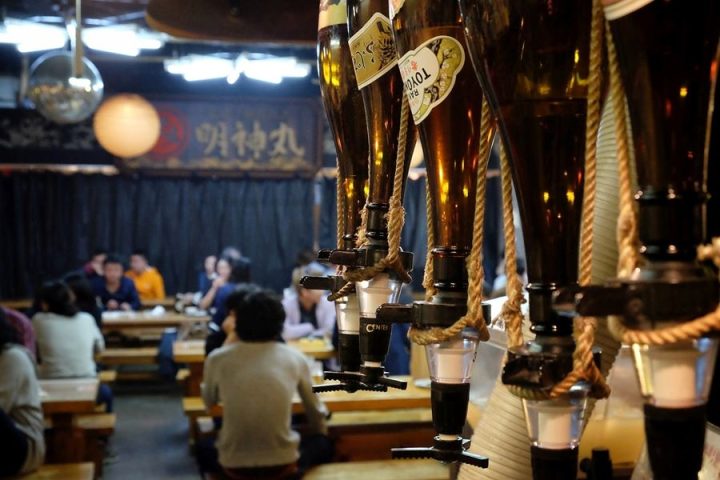
Shikoku is dotted with beautiful, historic sake breweries, some located in the middle of towns, others deep in the countryside. In recent years, there’s been a move away from the old system where a master brewer (toji) leads a team of seasonal workers who produce sake in the winter months and disband in spring, although this system still exists. At many small, family-run breweries, the person with the most experience takes charge in place of a toji. The other family members each have their own role and they work year-round, brewing in the winter and marketing the product in the warmer seasons. This has resulted in innovation, and sake of ever-higher quality.
Today many young brewers are taking over the family business in Shikoku, and there’s a new emphasis on unpasteurised, unfiltered sake. Even the old styles like yamahai, a highly robust and characterful type, are making a comeback. Brewed with painstaking processes, they deliver a world of flavour that would surprise the uninformed to a remarkable degree.
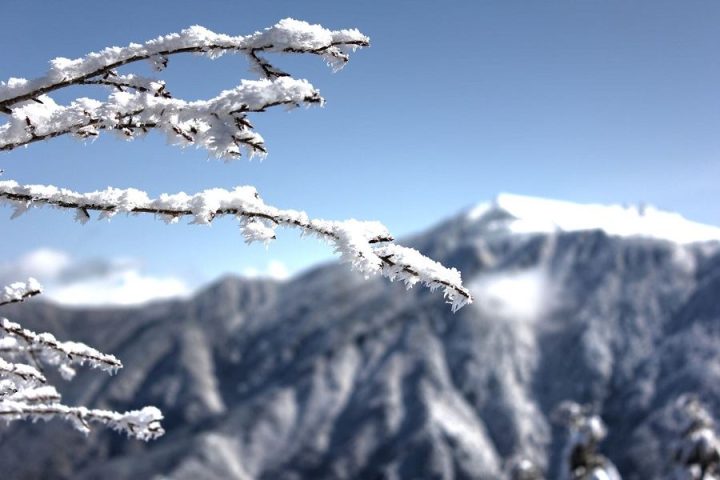
Shikoku has all the characteristics that favour sake brewing and enjoyment. The middle of the island is mountainous, with the highest peak in western Japan, Mt. Ishizuchi. It attracts a great deal of snowfall, despite its southern latitude. Shikoku’s other mountain ranges are plenty high enough to gather snow too. The snowmelt percolates down through the rock over centuries, filling the wells of the breweries with mineral-rich water. The warm summers are excellent for growing rice with the large, starchy centre that’s ideal for brewing sake. Winter is cold enough to ensure good brewing conditions.
Each region of Shikoku has both a mountainous interior and access to the coast, and so there are breweries producing heavier, richer sake that best matches the food found in the mountains – game, river fish, starchy vegetables and salted pickles –, and lighter, dryer sake to complement the seafood available around the coast.
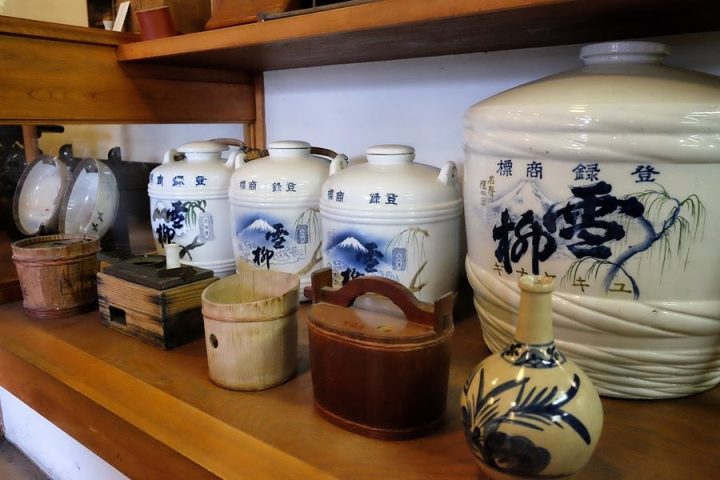
The Sake Styles of Shikoku
Tokushima
28 breweries
Tokushima Prefecture produces mellow sake using the water that flows from the Shikoku Mountains and Sanuki Mountains. The difference between the daytime and night-time temperature is great, and the combination of strong sunshine and fresh breezes over the terraced rice fields of the region is ideal for growing sake rice. Tokushima has developed its own strains of sake rice (sakamai), and using skills passed down through generations, the local toji work with the rice and water to create a rich diversity of sake.
Kagawa
6 breweries
Kagawa Prefecture is the smallest prefecture in Japan, hence the small number of breweries within its borders. Nevertheless, the region is home to Kinryo, a brewer whose products can be found widely throughout Shikoku. To the north of Kagawa lies the Seto Inland Sea, spanned by the Seto Ohashi Bridge, one of the gateways to Shikoku. The food culture of Kagawa features the riches of the sea and of the Sanuki Mountains, which provide quantities of pure water ideal for making sake. Kagawa’s sake perfectly matches the udon and chicken for which the prefecture is known.
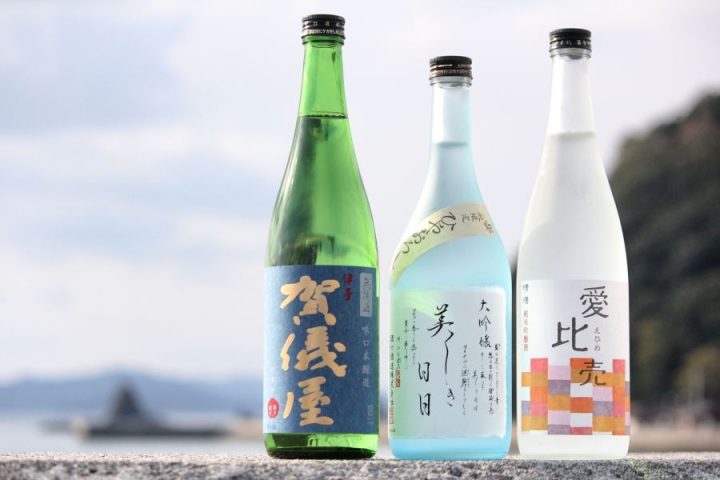
Ehime
39 breweries
Ehime Prefecture is a major, if little-known producer of sake, evidenced by the large number of breweries found here. The abundant groundwater produced by the Shikoku Mountains and the seafood available in all seasons from the Seto Inland Sea and the Uwakai Sea are important factors in the development of Ehime’s sake. Its agreeable sweetness and richness suits the unpretentious simplicity of the white fish of the Seto Inland Sea. The brewers work closely with the agricultural cooperatives to develop new strains of sake rice, while individual breweries work hard to innovate. Such is its reach that sparkling sake from Ehime has been used for the toast at the opening of the Cannes Film Festival.
Kōchi
18 breweries
Kōchi is renowned for its enthusiastic drinking culture – it has the highest per capita consumption of alcohol of all of Japan’s prefectures. Cold winters are beneficial for brewing sake, but since Kōchi is located in a warm region of Japan, from olden times its brewers developed methods suited to their locale. Sake in Kōchi is typically dry, with a quality on a par with famed Niigata and Toyama brews. But the younger generation of brewers is producing intriguing combinations of fruity starts and dry finishes. The quality and variety of the seafood in Kōchi is exceptional, and this tightly-structured sake enhances it to the full. Kōchi’s geisha know a thing or two about sake, and can show you some very droll games.
Breweries to Visit
Here we look at one brewery in each prefecture that you might like to visit. These are just for example, and there are many other breweries that welcome visitors, although a reservation is often required. We’re happy to make the arrangements for you.
Honke Matsuura, Tokushima Prefecture
Founded in 1804 by Naozo Matsuura in the city of Naruto, Tokushima Prefecture, the Honke Matsuura brewery is still operated by the Matsuura family. Its brand, Narutotai, features a fat and lively red snapper (tai), caught in mid-leap from the roiling currents of the Seto Inland Sea.
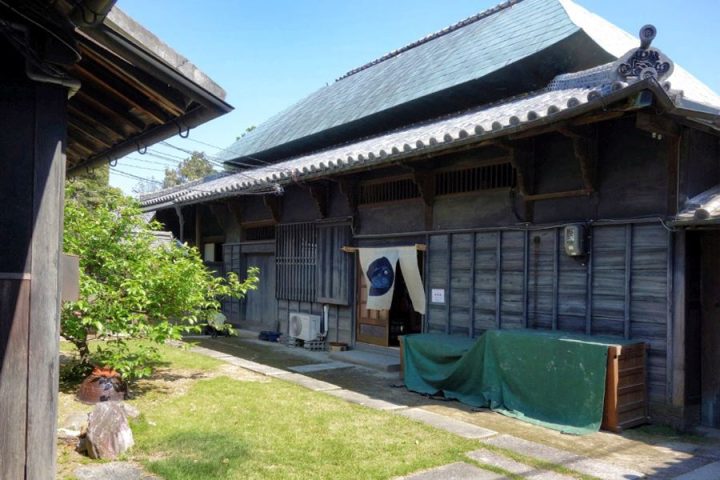
Narutotai is well-known in the U.S., thanks to the innovative spirit that led the brewery to export unpasteurized sake (namazake) in an aluminium bottle. This delicious, fresh and zesty brew was an instant hit, giving customers overseas their first, unforgettable experience of sake just as it tastes when it comes fresh out of the press at the start of spring. A more recent product, Mizu-to-Kome, comes in a bottle typical of wine. This excellent sake is perfect to enjoy on its own, or as an accompaniment to any type of food.
The brewery is situated near Ryosen-ji Temple, the first of the 88 Shikoku Pilgrimage temples. You can buy sake at the attractive brewery shop, and also take a short tour of the brewery, but one week’s notice is required. Please let us know if you want to tour Honke Matsuura.
Address: Yanaginomoto-19 Oasacho Ikenotani, Naruto-shi, Tokushima-ken 779-0303 Map
Kinryo, Kagawa Prefecture
Although Kagawa has the fewest sake breweries of Shikoku’s prefectures, it’s also home to the most comprehensive brewery visit experience. The Kinryo Museum is situated on the main approach to Kotohira shrine, one of Shikoku’s must-see locations. In the original and authentic brewery buildings, you can learn how sake is made with life-size models and mixed media, see many old-fashioned tools, and enjoy a sake tasting. There’s also an 800-year old camphor tree. The museum is free to enter and it’s open year round. Don’t miss it when you visit Kotohira. A couple of stops up the Dosan Line is the currently operating Kinryo Tadotsu brewery, where you can take a guided tour with a reservation. Please let us know if you want to tour the Tadotsu brewery.
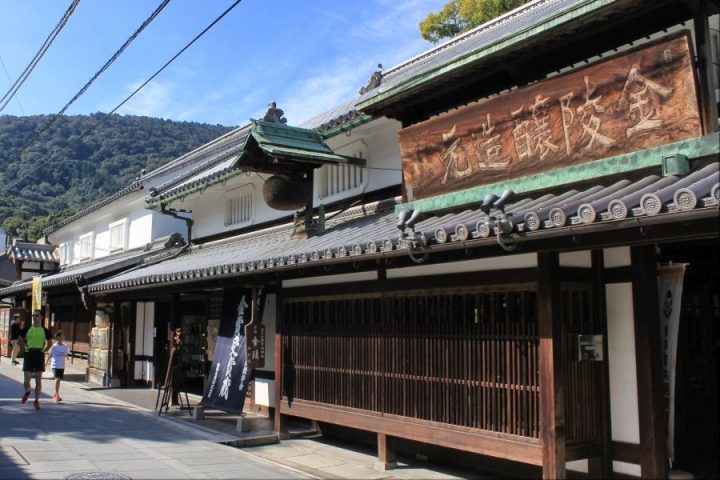
Kinryo sake is characterized by a beguiling nutty richness. It’s an excellent companion to cheese, as well as the udon for which Kagawa is renowned.
Address: Kotohira, Nakatado District, Kagawa Prefecture 766-0001 Map
Seiryo, Ehime Prefecture
Many of today’s brewers are the descendants of village headmen (shoya). They were responsible for levying taxes in the form of rice on the peasants in their region, and delivering the rice to the feudal lord. They were not much loved by the peasants, and they looked to their defence with stout doors and matchlock guns. But the lords valued them for the crucial role they played in hoarding the rice, and even condescended to visit these retainers occasionally. The Seiryo brewery in Saijo have a sake named Kagiya, which means ’keeper of the keys’. It harks back to the days of their headmen ancestors, who used their keys to raid the lord’s rice store, to make sake for their own enjoyment and further enrichment.
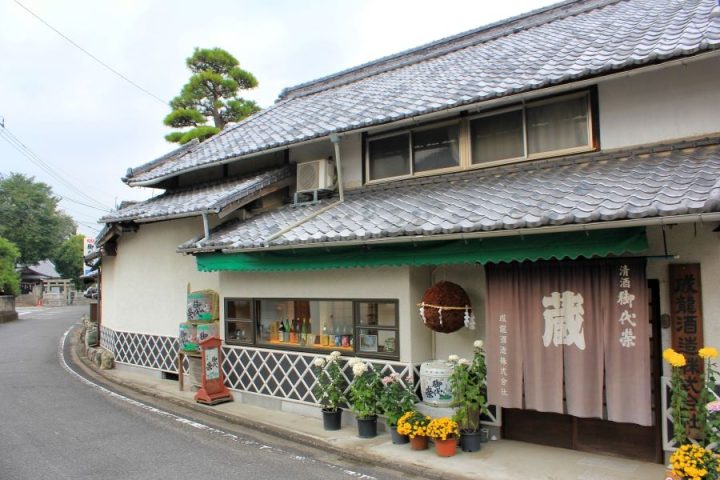
The brewery is housed in a beautiful series of buildings in a village surrounded by rice fields. It has a welcoming shop and tasting area, where you’re likely to meet three generations of the brewing family. Besides Kagiya, you can taste their other brands and sake-based products. You can also ask for a tour of some of the brewing facilities.
Address: 1301-1 Shuu, Saijo, Ehime Prefecture 799-1371 Map
Mutemuka, Kochi Prefecture
Heading east and inland into the mountains along the Shimanto River, you come to the brewery called Mutemuka in the little town of Taisho. This is one of Japan’s more unusual breweries. Instead of using one of the strains of rice developed specifically for brewing sake, Mutemuka uses the locally grown table rice. The brewery is determined to protect the local environment, especially the water which is essential for making sake, and so no chemical pesticides or fertilizer are used to grow the rice. Instead, the farmers contracted to produce the rice use a mulch made of natural washi paper, dyed black with a natural pigment. This protects the rice, ultimately fertilizing the soil when it decays.
Unlike most breweries which devote considerable resources to producing premium ginjo sake, Mutemuka brews simple junmai types exclusively. Junmai tends to be more robust than ginjo, and Mutemuka bottles most of its product unfiltered and unpasteurized, which results in rustic sake of unforgettable character. This sake is brewed to match the produce of the mountains rather than the sea.
For Mutemuka, sake is something of a side product. The majority of its produce is shochu made using chestnuts for the starch. The chestnuts are pureed in a machine originally designed for mincing fish, fermented, and then distilled to produce a spirit that retains the sweet and enticing aroma of chestnuts.
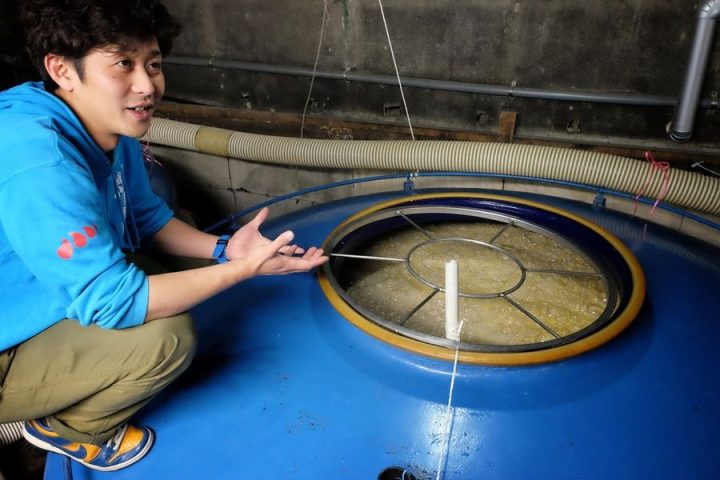
Mutemuka is quietly proud of its sake and shochu and the brewery welcomes visitors. The staff are studying English and are happy to show you around the brewery. In the brewery shop, you’re free to taste all of their products. Another thing that sets this brewery apart are the glass cases of plastic manga and anime figurines from the nearby Kaiyodo Hobby Museum.
Address: 452 Taisho, Shimanto, Takaoka District, Kochi Prefecture 786-0301 Map
Sake Bars
Kuramotoya
Kuramotoya in central Matsuyama is run by the Ehime Sake Brewer’s Association, and it offers products from most brewers in the prefecture. Some of the offerings aren’t for general release and are only available here, by the glass.
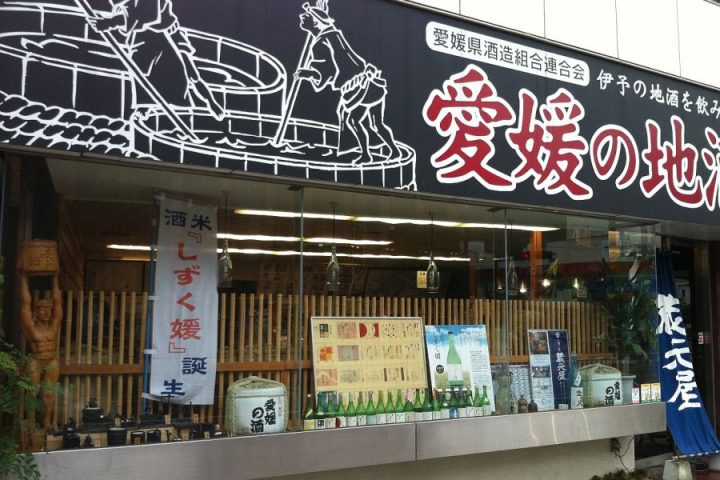
There are no seats, just four round tables, which are the lids of sake tanks resting on sake crates. On each table is a menu of many types of sake, with information on the brewer, sweet-dry balance, alcohol content and price. Prices range from 100 to 400 yen for a glass, pay on delivery. You can also serve yourself with pure brewer’s water for slaking your thirst and clearing your palate.
Naturally a glass of sake calls for a snack or two, and there’s a menu of about twenty items, including Ehime favourites like fish-paste patties (jakoten). There’s also a souvenir corner selling a range of interior decorations redolent of the sake brewery, sake cups, and even CDs of brewers’ songs. You can also purchase sake here by the bottle. If you find something you want to drink more of, ask the staff for a takeaway.
Address: 1 Chome−11−7, Ichibancho, Matsuyama, Ehime 790-0001 Map
Sakaneko
Sakaneko in the centre of Tokushima city is a quirky, cat-themed sake restaurant that’s sure to delight anybody who enjoys nihonshu. The spacious interior is decorated with ceramic cats in various styles, and the sake is served in the owner’s collection of eccentric tokkuri servers. There’s an excellent range of sake on offer, including several varieties aged on the premises, a practice which may be frowned on by purists, although the results can be a delightful adventure. The food is good too, and the staff are happy to talk about sake.
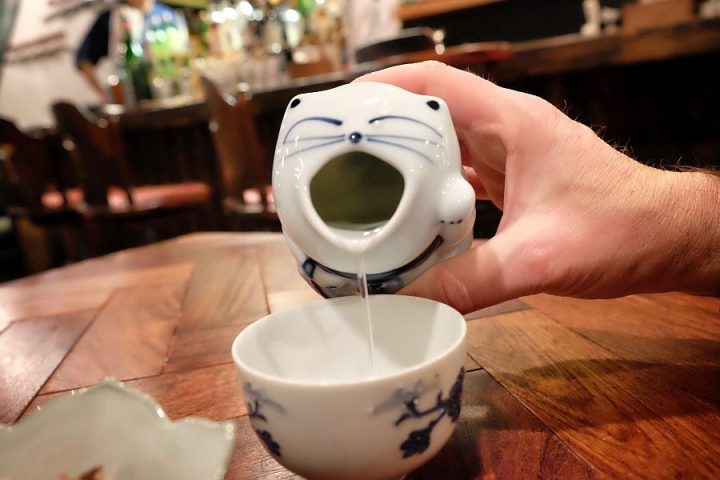
Address: 2−20−1 Ryogokuhoncho, Tokushima, Tokushima 770-0843 Map
Hirome Ichiba
A couple of blocks from Kochi Castle is Hirome Ichiba, perhaps Kochi’s best-known place to eat. It’s a large hall filled with stalls selling food and drink, with communal seating areas. You purchase what you want from the stalls and take it to your table to eat. Here you can find all of Kochi’s favourites like katsuo no tataki, nori tempura, whale, chicken, takoyaki, and all sorts of vegetables, not to mention the citrus fruit of Shikoku. You can watch katsuo tataki being prepared, with the large fish being seared over burning straw.
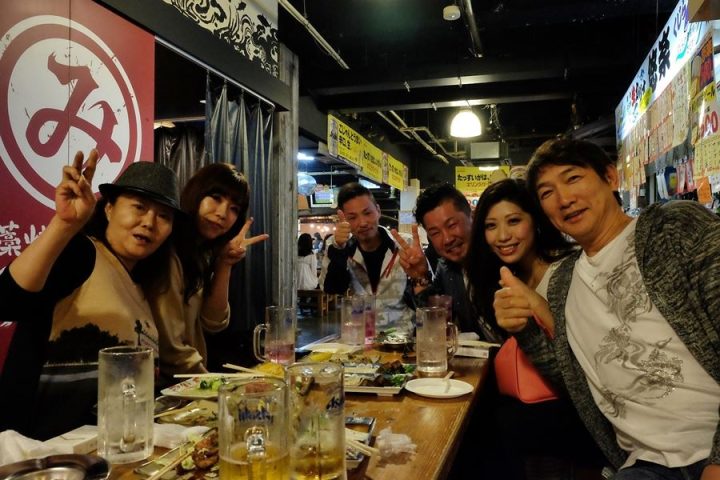
The people of Kochi are big drinkers, and the stalls offer beer, shochu, and various mixes involving shochu. It’s also an ideal place to sample Kochi’s wide variety of sake in a distinctly relaxed atmosphere. Drinking at Hirome Ichiba starts from the afternoon, especially at the weekend, and it’s a very sociable place. You’re sure to make some friends here.
Address: 2 Chome-3-1 Obiyamachi, Kochi, Kochi 780-0841 Map
Your Shikoku Sake Guide
Rod Walters of Shikoku Tours is a Sake Educator certified by the Sake Sommelier Association. Rod can arrange enjoyable and educational sake tastings at restaurants and other venues, and lead tours of sake breweries around Shikoku. These are particularly well-suited to incentive travel and other MICE occasions. And if you want to visit a particular brewery on your trip, be sure to drop us an email and let us know, and we’ll see what we can do.

Find out all you need to know about sake in Shikoku on Shikoku Sake website.
Related Tours

Experience the most beautiful and interesting temples of the Shikoku Pilgrimage in seven days.

A tour for families or friends, staying in the most characterful kominka and ryokan of Shikoku.

Visit the most beautiful and interesting temples of the Shikoku Pilgrimage and walk the toughest trails.

